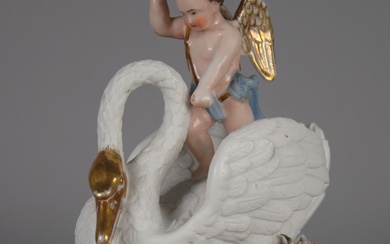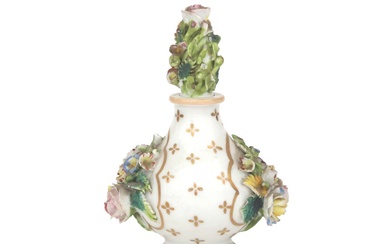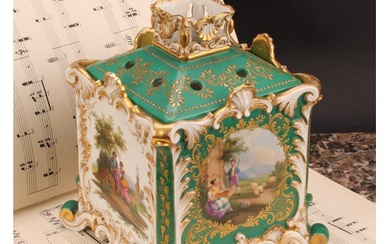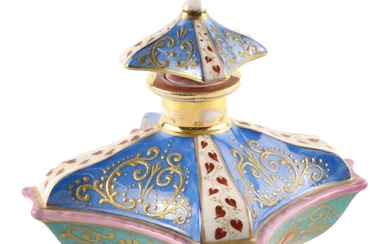Jacob Petit
JACOB PETIT (1796-1865).
Porcelain.
They have restorations and faults.
They present seals on the base.
Measurements: 34 x 20 x 20 cm (x2).
Pair of porcelain vases produced by the Jacob Petit workshops. Both pieces have the same format consisting of three parts: the body, the long neck and the mouth. Both vases have relief ornamentation with figurative motifs, animals such as lobsters, lizards and fruits are arranged over the entire surface.
Jacob Petit (1796-1865) was one of the most famous porcelain artists of the 19th century. After traveling extensively in Europe, he returned to France and established a modest porcelain manufactory in Sèvres in 1830. As his business expanded, he moved to a rented factory in Fontainebleau in 1834 and by 1838 was offering highly prized ornamental objects to a distinguished clientele. His work was an innovative fusion of neoclassical, rococo and romantic elements that blended complex motifs and sculptural forms using a vivid and distinctive palette. He is generally credited with introducing Rococo to Parisian porcelain production in 1834, which was a radical departure from the prevailing neoclassical fashion.
HELP
View it on
Estimate
Time
Auction House
JACOB PETIT (1796-1865).
Porcelain.
They have restorations and faults.
They present seals on the base.
Measurements: 34 x 20 x 20 cm (x2).
Pair of porcelain vases produced by the Jacob Petit workshops. Both pieces have the same format consisting of three parts: the body, the long neck and the mouth. Both vases have relief ornamentation with figurative motifs, animals such as lobsters, lizards and fruits are arranged over the entire surface.
Jacob Petit (1796-1865) was one of the most famous porcelain artists of the 19th century. After traveling extensively in Europe, he returned to France and established a modest porcelain manufactory in Sèvres in 1830. As his business expanded, he moved to a rented factory in Fontainebleau in 1834 and by 1838 was offering highly prized ornamental objects to a distinguished clientele. His work was an innovative fusion of neoclassical, rococo and romantic elements that blended complex motifs and sculptural forms using a vivid and distinctive palette. He is generally credited with introducing Rococo to Parisian porcelain production in 1834, which was a radical departure from the prevailing neoclassical fashion.
HELP







